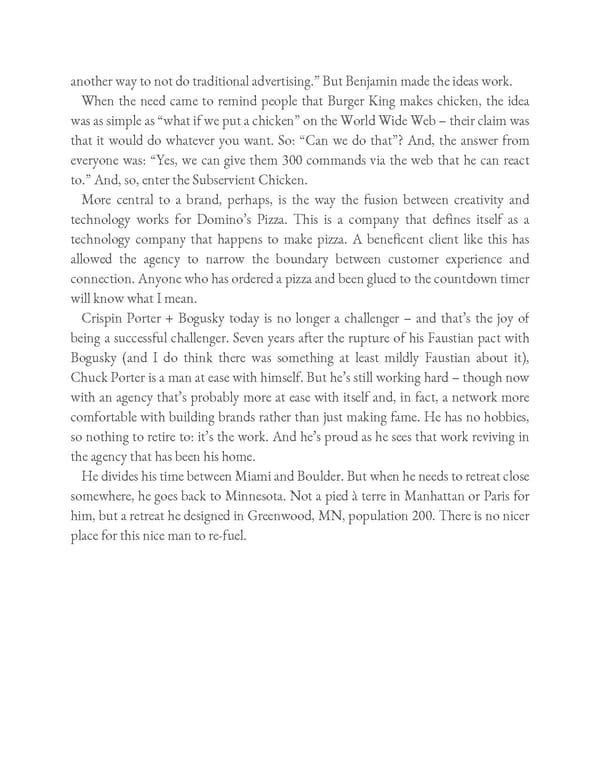another way to not do traditional advertising.” But Benjamin made the ideas work. When the need came to remind people that Burger King makes chicken, the idea was as simple as “what if we put a chicken” on the World Wide Web – their claim was that it would do whatever you want. So: “Can we do that”? And, the answer from everyone was: “Yes, we can give them 300 commands via the web that he can react to.” And, so, enter the Subservient Chicken. More central to a brand, perhaps, is the way the fusion between creativity and technology works for Domino’s Pizza. This is a company that defines itself as a technology company that happens to make pizza. A beneficent client like this has allowed the agency to narrow the boundary between customer experience and connection. Anyone who has ordered a pizza and been glued to the countdown timer will know what I mean. Crispin Porter + Bogusky today is no longer a challenger – and that’s the joy of being a successful challenger. Seven years after the rupture of his Faustian pact with Bogusky (and I do think there was something at least mildly Faustian about it), Chuck Porter is a man at ease with himself. But he’s still working hard – though now with an agency that’s probably more at ease with itself and, in fact, a network more comfortable with building brands rather than just making fame. He has no hobbies, so nothing to retire to: it’s the work. And he’s proud as he sees that work reviving in the agency that has been his home. He divides his time between Miami and Boulder. But when he needs to retreat close somewhere, he goes back to Minnesota. Not a pied à terre in Manhattan or Paris for him, but a retreat he designed in Greenwood, MN, population 200. There is no nicer place for this nice man to re-fuel.
 Ogilvy on Advertising in the Digital Age Page 394 Page 396
Ogilvy on Advertising in the Digital Age Page 394 Page 396